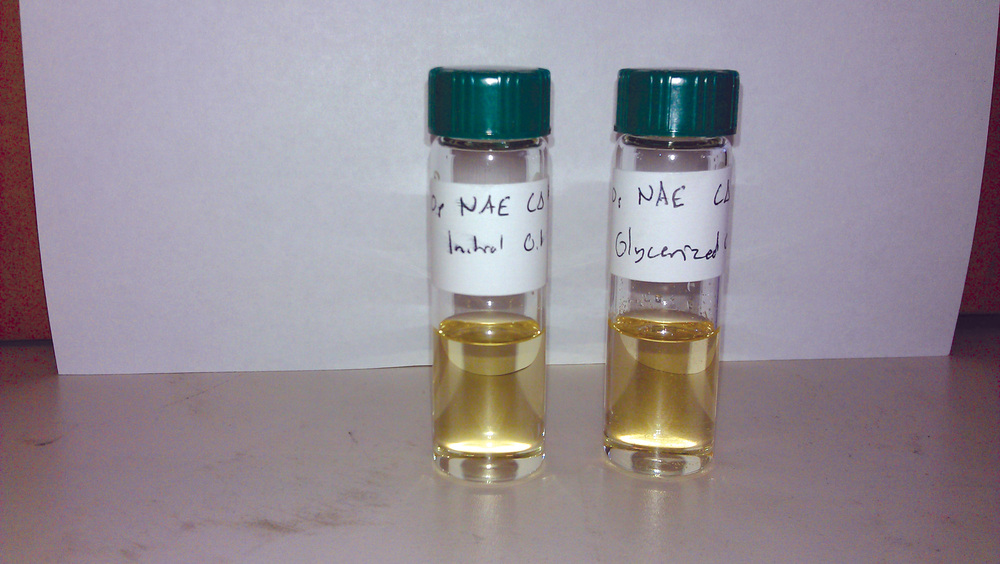Energy Consumption: Acid Esterification vs. Glycerolysis



July 18, 2012
BY Kirk Cobb
I read with interest “A Critical Component” by Erin Voegele in the January/February 2012 issue of Biodiesel Magazine. It compares biodiesel pretreatment options to remove impurities from lower quality feedstocks, most notably free fatty acids (FFA) in used cooking oils. The article identifies three common process options to remove or assimilate FFAs prior to downstream processing: acid esterification, glycerolysis and steam stripping. The first two options convert FFA to methyl esters; the third removes FFAs, sacrificing yield to avoid soap formation. The table on page 24 of the original article specifically notes energy usage for glycerolysis is “very high” compared to acid esterification, listed as requiring “minimal” energy usage. I respectfully disagree.
When acid esterification is used to reduce FFAs in feedstock, the immediate energy use is low, however, it produces water, creating wet, acidic methanol, which must be neutralized, dried and recovered. Furthermore, if the starting feedstock has 20 to 40-plus percent FFAs, multiple steps may be needed to reduce them to acceptable levels, generating even more acidic, wet methanol. After neutralizing the acidic methanol, drying requires multistage distillation with significant reflux rates, resulting in very high energy use. Therefore, all things considered, the use of acid esterification and necessity of wet methanol recovery results in “very high” energy use.
In comparison, glycerolysis can convert any FFA levels to glycerides without methanol, and water formed in reaction evaporates away, and doesn’t generate wet methanol. As the glycerized feedstock enters transesterification, the system can be kept essentially moisture-free; excess methanol from transesterification can be stripped out and recovered dry. When comparing mass and energy balances, acid esterification (with methanol drying) uses six times the thermal energy as glycerolysis.
Glycerolysis does require high-temperature operating conditions, typically 460 degrees Fahrenheit; 500 to 550 F thermal oil is the recommended utility; typical steam boilers (150 psig steam at 360 F) simply cannot do the job. But in the oleochemicals industry, including biodiesel manufacturing, high-temperature thermal oil systems (500 to 650 F) are the norm, not the exception. Fatty acid vacuum distillations, fatty acid ester production (methyl, isopropyl, butyl, glycol, glycerol esters, etc.), polyesters, dimerized fatty acids, and other oleochemical processes, all routinely use thermal oil utility systems. But contrary to popular (mis)conception, high-temperature processing does not imply high-energy use, especially in continuous flow as opposed to batch. Furthermore, high-temperature heating systems are not necessarily more expensive than steam boilers—but for existing plants with only steam heating, a thermal oil system represents added capital investment.
Advertisement
Advertisement
The glycerolysis option results in the lowest process energy use, not the highest, and for grass-roots multifeedstock plants, glycerolysis is a much-preferred option with lower capital and operating costs compared to acid esterification for the same biodiesel plant capacity, particularly for high-FFA feedstocks.
For discussion, consider a 10 MMgy biodiesel plant design running continuously for 350 days yearly (8,400 hours/year). The feedstock contains 15 to 20 percent FFA, and is fed to the process at 9,900 pounds per hour (pph) (22 gallons per minute (gpm)). The required glycerin feed rate is 1,600 pph, or 160 gallons per hour.
Glycerolysis typically operates at 460 F. Feedstock comes from storage at 120 F, so it must be heated up 340 F, requiring a total heat load of about 2.2 MMBtu per hour (9,900 x .65 x 340). The glycerin stored at 160 degrees must be heated to 460 F, requiring 360,000 Btu per hour. So, total heat load is approximately 2.56 MMBtu per hour. In a continuous process, however, the hot glycerized oil can be used to preheat the incoming feed. The 460-degree glycerized oil can be cooled to 160 degrees, thus preheating the incoming feed from 120 to 420 F. Thermal energy savings are therefore about 1.93 MMBtu/hour. The glycerolysis pretreatment also dries the feedstock. Assume typical feedstock contains 1 percent moisture, or 100 pph water. Also, about 100 pph of water is generated from the glycerolysis reaction. Thus a total moisture load of around 200 pph, when evaporated out of the hot oil, will contribute approximately 200,000 Btu/hour (200 x 1,000 Btu/pound). Combining all these figures, the net heat load of the glycerolysis system is about 830,000 Btu/hour.
The glycerized oil then moves into transesterification. Two continuous reactors may be run in series. The first reaction is fed at around 2,200 pph of methanol (two times stoichiometric); after decanting glycerin, the second reaction is fed an additional 550 pph methanol (0.5 times stoichiometric).
Advertisement
Advertisement
Methoxide catalyst may be fed at 0.5 percent in reaction one and 0.125 percent in reaction two, with small amounts of methanol in the catalyst solution of course, which collectively add another 200 pph of methanol. Total methanol actually charged is 2,950 pph. Of this, about 1,900 pph is excess and can be recovered dry when stripped from the crude biodiesel and glycerin streams. About 400 pph of reflux may be used when stripping methanol, so a total evaporative heat load might be 1.1 MMBtu/hour (2,300 x 475). There are some sensible heat loads as well during methanol stripping, so the total methanol stripping heat load is estimated to be about 1.5 MMBtu/hour.
Following glycerolysis and transesterification, the methanol can be recovered dry and is ready for reuse. If acid esterification was first used instead of glycerolysis, however, the excess methanol would be wet and contain free sulfuric acid, requiring neutralization, and couldn’t be reused unless dried. Typically, acid esterification uses as much methanol as transesterification—often more—especially if more than one esterification cycle is required. Assume total wet methanol recovered from both acid esterification and transesterification is 3,800 pph (1,900 pph x 2). A typical reflux rate to dry methanol is 1.75 times the distillate, so reflux equals 6,650 pph. The total methanol drying column vapor load is 10,450 pph of dry vapor at top of column, with latent heat of vaporization of 4.96 MMBtu/hour (10,450 x 475, excluding sensible heat loads). This methanol drying heat load is six times the heat duty for continuous glycerolysis of 830,000 Btu/hour. Thus, drying methanol at temperatures between 147 and 220 F uses six times the energy than glycerolysis at 460 F.
Assume the feedstock was dark-colored, rendered oil. The resulting biodiesel is dark like coffee, risking marketability. Vacuum distillation may be the next step. The same high-temperature thermal oil utility system used for glycerolysis will supply the distillation process heat. At this point, the crude biodiesel is about 9,900 pph, roughly equal to feedstock plus methanol minus glycerin and a few minor items such as neutralized salts, minor oil losses on the salts, etc. Assume all 9,900 pph of dark methyl esters must be distilled. The net heat of vaporization of finished product is 1.24 MMBtu/hour (9,900 pph x 125 Btu/pound). There are some sensible loads, and a bit of reflux, bumping this distillation heat load up to about 1.5 MMBtu/hour.
The original article in the January/February 2012 issue of Biodiesel Magazine also mentioned that glycerolysis will darken the final product. We tested food-grade cooking oil mixed with 100 percent FFA made from the same oil to create a high-FFA, very light-colored oil. This high FFA oil was then glycerized at 460 F using USP-grade glycerin. The resulting low-FFA glycerized oil was tested for color. The test confirmed that if glycerolysis is done with proper process technique, this high-temperature process does not result in discoloration. Both samples, before and after glycerolysis, are lighter than a Lovibond 1 color.
Finally, thanks to Jed Seybold of Paratherm Corp. for promoting thermal oil systems in biodiesel plant utility systems, and Jon Van Gerpen, department head of Biological and Agricultural Engineering at University of Idaho, for his review and critique of this data.
Author: Kirk Cobb
Senior Process Design Engineer
Superior Process Technologies Inc.
(612) 378-0800 x1
kcobb@superiorpt.com
Upcoming Events





